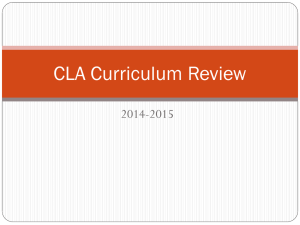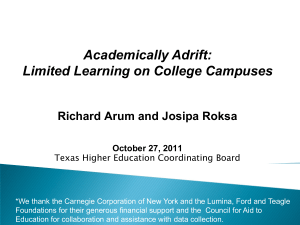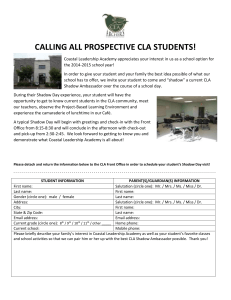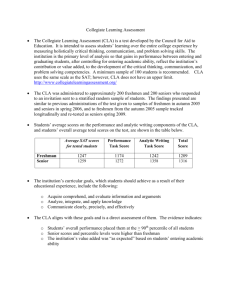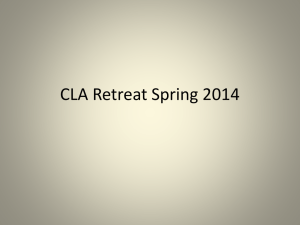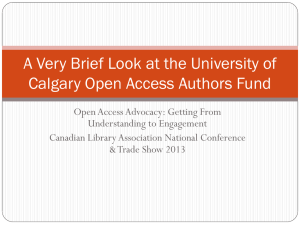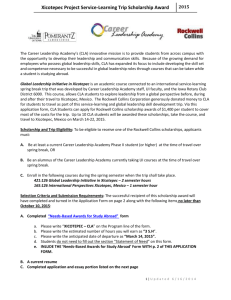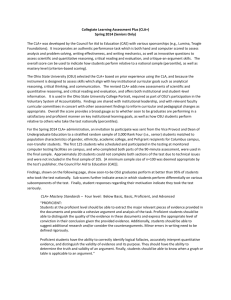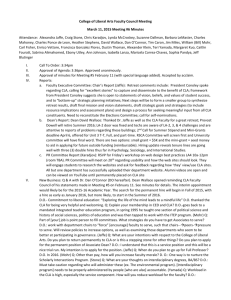Strategies, approaches and interventions for supporting the
advertisement
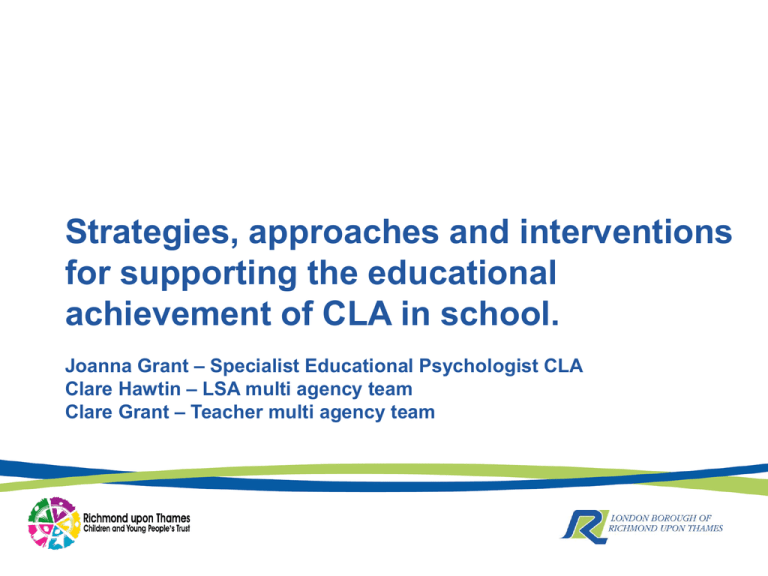
Strategies, approaches and interventions for supporting the educational achievement of CLA in school. Joanna Grant – Specialist Educational Psychologist CLA Clare Hawtin – LSA multi agency team Clare Grant – Teacher multi agency team It may seem obvious but….. Ensure receptionist staff know your name Put DT status on photos as seen for SENCO role. Ensure the young people know your role Ensure you are given time to be available Use email where possible for Social workers (avoid missing each other) You are an essential part of the communication triangle Share information cautiously on a need to know basis DT Social Worker Foster carer The 9 points from the guidance. 1. Doing the things they do for all children but more so 2. Balancing high levels of support with real challenge 3. *Skilfully linking each child to a key person they relate well to 4. Making it a priority to know the children well and to build strong relationships 5. Developing strong partnerships with carers, local authorities and specialist agencies 6. Making things happen and seeing things through 7. Ensuring consistency as well as discrete flexibility 8. Actively extending the horizons of each child 9. *Planning for future transitions Consider moving: Between lessons, from class to lunch/break time, House, between Classes, to different Schools change of home placement. Supporting CLA via…… Individual 1-1 support within the classroom School action support – beyond the classroom Involving external support/agencies Strategies Approaches Interventions Strategies within the classroom Overarching teacher responsibility strategies for all children. More specific strategies to help support the development of our young people Emotional Social Academic Overarching class teacher responsibility strategies for all children Acknowledging difficulties at key times e.g. mothers day/ Christmas/ end of term. Get to know the young person Making the curriculum relevant Normalising the child’s school experience Ensure smooth transition SEAL IDP BESD Module Emotional • Recognise/celebrate strengths • Awareness of comforters • *Emotional register – teacher knows how CLA feels (feeling thermometer) • High expectations of themselves. • Class teacher of CLA to have high expectations • Give responsibility • *PASS outcome • *Scaling • Obtaining child’s views • Relaxation techniques (http://www.relaxkids.com/) • *Miracle Q wake up all problems gone what difference would you notice? • Changes/occurrences out of the norm: provide guidance on what to say to peers (e.g. use of script) – be supportive Social Peer mentoring Buddy system, thinking partners *PASS outcome *Scaling Obtaining child’s views *Problem postcards (Examples) Circle of friends Academic Quality first teaching Wave 1 responsibility e.g. differentiating work *Level of language used must be at the child’s level of understanding (trauma inhibits understanding) Predictable routines/ structure Small group work *Visual resources (timetable, pictures, photos) *Scaling Obtaining child’s views Movement breaks (give out books – active jobs) Case study activity What approaches would you use? Approaches beyond the classroom School systems for playtime e.g. peer mediation, buddy system, Internal mentors All staff to have high expectations Consistency of boundaries between all teaching staff Communication between DT and school staff needs to be strong. Inc. lunch time staff (friendship issues and break times) Someone to spend time with CLA (Nurturing time). Show a genuine interest Commitment (someone within school to be committed) Active in school – jobs with kudos DT to be clear about contact arrangements/care plans/PEPs Have knowledge/understanding of attachment difficulties Support to be offered during unstructured times Approaches beyond the classroom - continued Consistency and continuity between home and school (link book) Transition planning moving year groups, classes, placement. Links with older/younger peers to help enhance selfesteem or resilience. Involvement in after school activities Restorative justice Groups: Social skills; Social use of language; Anger management Quiet areas Outside support and interventions for CLA and their network CLA Multi Agency Team (MAT) (advice for resources & support) The Befriender Scheme (Richmond) SW – know who key person is to contact. Ensure they know your contact details. (email) Foster Carers EPS- draw on school EP for support and advice Transitions between schools Kidscape (bullying) Bereavement= Cruse, Winston's wish Outside support and Interventions for CLA and their network - continued CAMHS; Family therapy, psychotherapy Health professionals: Health visitors/paediatricians/SALT/OT/physiotherapy Support from: Adolescent Resource Team (ART); Youth Offending Team (YOT); Drug & Alcohol Team Nurture group (Oldfield) Mentors – Peer, Reading Children’s centres (EY) Schools to liaise with others – share good practice (liaise with MAT) Celebration of achievement Outside support and interventions for CLA and their network - continued Voluntary and paid groups Music/art therapy. Me too & co. Singing hands Toy library (Croft centre) Off the record – drop in for teenagers Three wings trust – counselling service Orleans gallery sessional groups (art club and arts award for children excluded) Heatham house – youth group Welcare – support for families Some useful www links Social and emotional foundations http://www.vanderbilt.edu/csefel/resources/strateg ies.html http://nationalstrategies.standards.dcsf.gov.uk/no de/251416 Feeling wheel, thermometer, certificates


